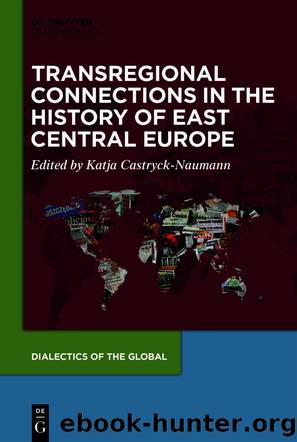Transregional Connections in the History of East-Central Europe by Katja Castryck-Naumann

Author:Katja Castryck-Naumann [Castryck-Naumann, Katja]
Language: eng
Format: epub
ISBN: 9783110680430
Publisher: De Gruyter
Published: 2021-09-10T11:44:20+00:00
f)Interference by one State in the internal political struggles of another by supplying grants of money or giving support of any kind to political parties.39
With these actions, which are now to be interpreted and assessed according international law, Pella describes political strategies and actions that had been part of the standard repertoire of the South-eastern European national movements against the Ottoman and Habsburg empires in the long nineteenth century. The subtext of Pellaâs argumentation was that what was legitimate in the age of national emancipation against the empires is no longer so in the age of nation-states. Pella thus attempted to bring political, military, and propagandistic action elements of irredenta, in general, and revisionism of the interwar period, in particular, conceptually close to the war of aggression and, at best, to integrate them into the definition of such a war of aggression, for example in the form of the preparation of a war of aggression.
Pellaâs academic initiative for the criminalization of the war of aggression was flanked by legal policy activities. In August 1924 in Berne, for example, as a Romanian delegate to the conference of the Inter-Parliamentary Union, a body of parliamentary representatives of various nations, he had argued for the criminalization of a war of aggression and proposed the development of an international criminal code.40 He was then appointed rapporteur for the next conference of the Inter-Parliamentary Union to be held in Washington, DC, in October 1925, where he presented a memorandum along these lines.41 In addition to the Inter-Parliamentary Union, Pella also promoted his ideas on the juridification of international relations in international professional organizations of lawyers, such as the International Law Association (ILA).
But, the most effective platform for him was the AIDP, founded in 1924 and based in Paris. Under the aegis of France and Belgium, the AIDP developed into an international arena in which anti-revisionist states, primarily Poland and Romania, as well as Yugoslavia and Greece, were very active in bundling and pursuing common foreign and international law policy goals.42 The AIDP advocated the creation of an international criminal law, either by unifying existing national criminal codes or by creating new international codification.43 It also supported the creation of an international criminal court. In addition to French and Belgian international law experts, such as Henri Donnedieu de Vabres and Henri Carton de Wiart, Pella and the Greek Nicolas Politis continued to advance the plan to classify wars of aggression as crimes under international law, to bring states and individuals to justice, and to condemn them. In doing so, they sought to institutionalize the aim laid down in the Covenant of the LoN to prevent wars as a legitimate means of asserting interests (Article 11) by establishing a norm under international law.
An extremely confident tone emerges from the writings of Pella, considered here as a representative of the legally educated actors in the field of international relations who wanted to shape international law in the orbit of the LoN. In keeping with the phrasing by Martti
Download
This site does not store any files on its server. We only index and link to content provided by other sites. Please contact the content providers to delete copyright contents if any and email us, we'll remove relevant links or contents immediately.
Keeper of Genesis by Graham Hancock(1607)
Hieroglyphs: A Very Short Introduction by Penelope Wilson(1312)
The Road to Ubar by Nicholas Clapp(1154)
Rembrandt Drawings by Rembrandt(1087)
The John Green Collection by Green John(1014)
Catching Fire: How Cooking Made Us Human by Richard Wrangham(958)
Forbidden Archeology's Impact: How a Controversial New Book Shocked the Scientific Community and Became an Underground Classic by Michael A. Cremo(952)
A Short History of the World in 50 Failures by Ben Gazur(920)
Hidden History: Lost Civilizations, Secret Knowledge, and Ancient Mysteries by Brian Haughton(879)
Primitive Mythology by Joseph Campbell(851)
The Creation of Inequality: How Our Prehistoric Ancestors Set the Stage for Monarchy, Slavery, and Empire by Kent Flannery & Joyce Marcus(840)
Hidden History by Jim Willis(830)
The History of Atlantis by Lewis Spence(788)
Neolithic by Susan McCarter(773)
Dinosaurs by Norman David;(761)
Searching for the Messiah by Barrie Wilson(746)
The Ancient Giants Who Ruled America: The Missing Skeletons and the Great Smithsonian Cover-Up by Dewhurst Richard J(700)
Ancient History from Coins by Howgego Christopher;(700)
The Christians Who Became Jews by Christopher Stroup;(684)
